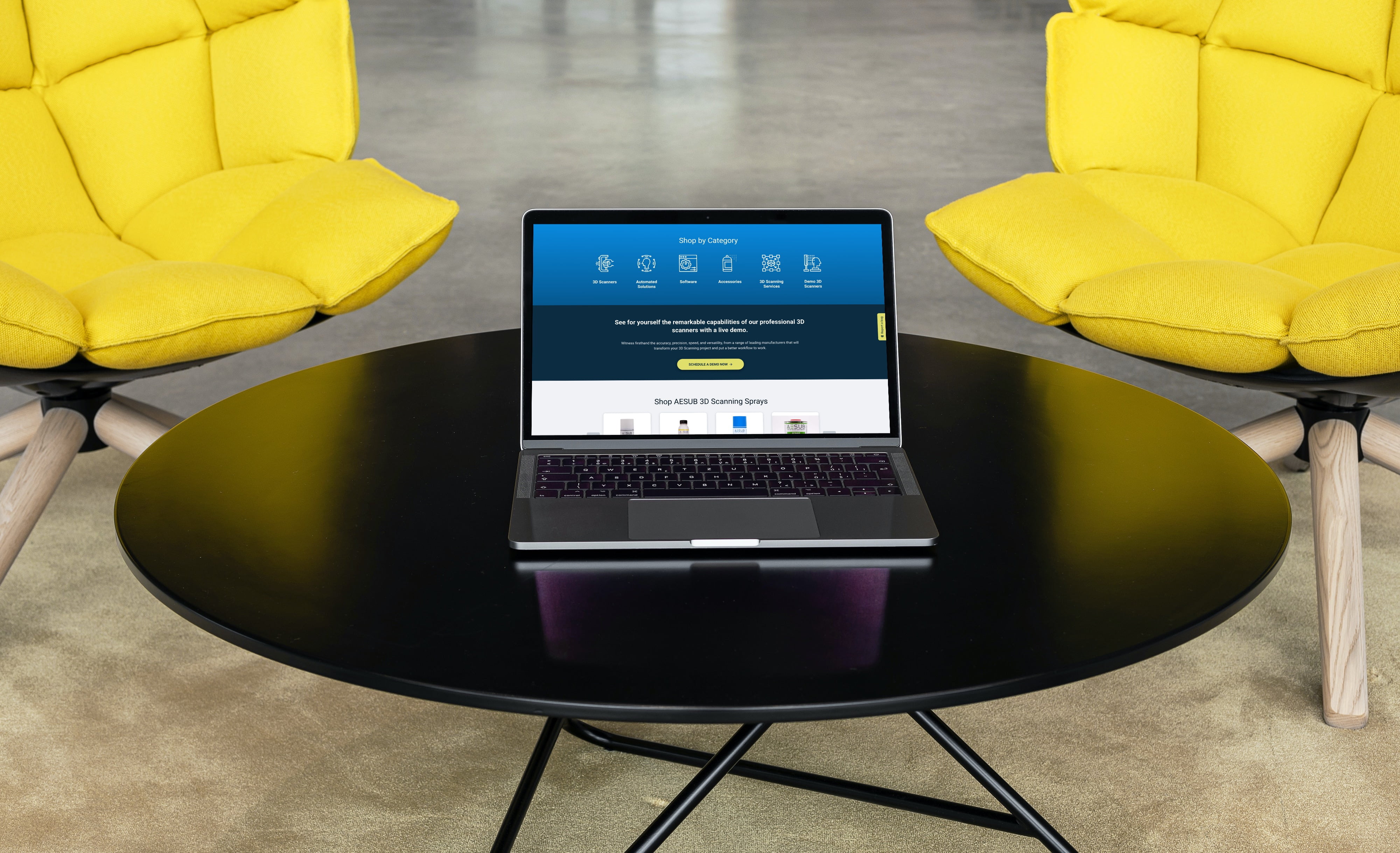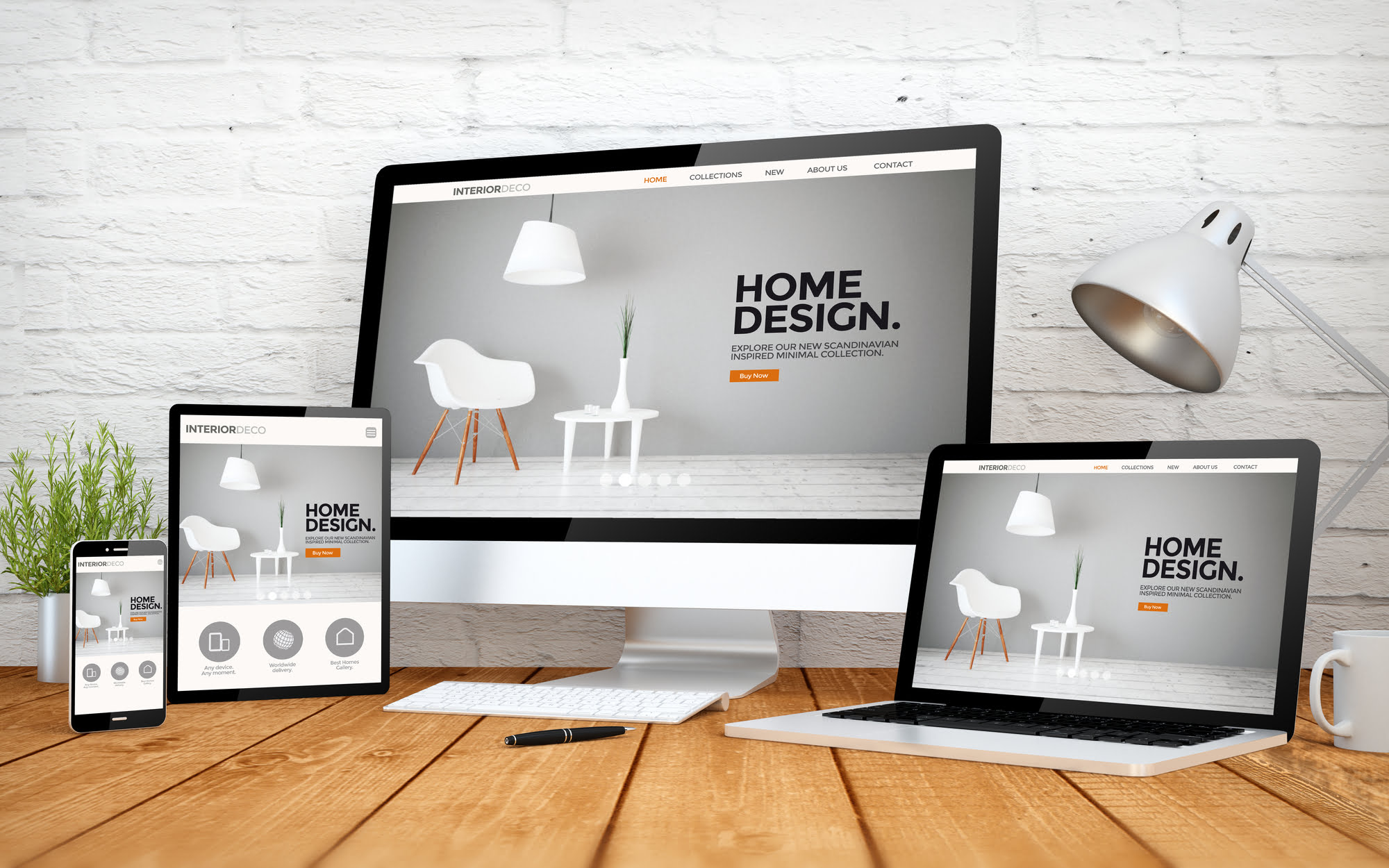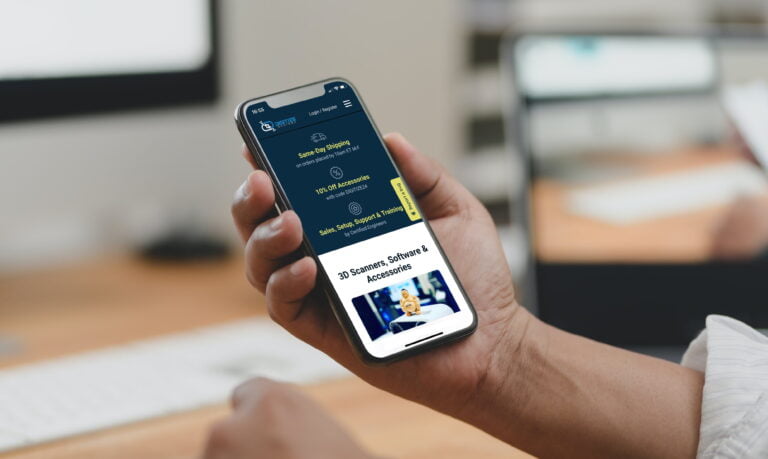
Landing Pages Best Practices You Should Know in 2024
Intro
The effectiveness of a digital marketing campaign largely hinges on the quality of its landing pages. Understanding and implementing the best practices for a landing page is as crucial as ever. This comprehensive guide will delve into the essentials of crafting landing pages that will capture attention and help you drive successful conversions. We’ll explore the nuances of what makes a landing page effective, backed by real-world examples and tips for improvement.
What is a landing page?

A landing page is a highly specialized tool in the digital marketing arsenal. It should be designed with a laser focus to guide visitors towards a single or multiple specific actions. These actions can range from capturing leads and encouraging newsletter sign-ups to directly facilitating sales.
A landing page differs from a website’s homepage because it has a specific purpose. While a homepage offers multiple navigational paths to different pages and content, a landing page is designed to streamline the user’s experience. It removes distractions and directs users to one or several primary calls to action (CTAs).
The success of a landing page lies in its ability to use audience insights to create an emotional link with a specific group of visitors. This personalized approach is vital for captivating and motivating users to carry out the intended action.
Why are landing pages important?
Best website landing pages offer these key benefits:
Increased Conversion Rates: A landing page can significantly boost conversions compared to a regular web page by removing distractions and honing in on one call-to-action.
Better Audience Targeting: A landing page allows for precisely targeting various audience segments. By creating different landing pages for other segments, businesses can tailor the content, design, and offers to match each group’s specific needs and preferences, leading to more effective engagement and conversion.
Enhanced Tracking and Analytics: A landing page makes it easier to track user behavior and measure the effectiveness of marketing campaigns. By analyzing how visitors interact with the landing page, businesses can gain valuable insights into what works and what doesn’t, allowing for data-driven optimization strategies.
Improved Ad Campaign Effectiveness: Landing pages are essential for the success of online advertising campaigns. By linking ads to relevant landing pages instead of a general homepage, businesses provide a more relevant experience for users, which helps improve the return on investment of ad spend.
Boosts SEO Efforts: Well-optimized landing pages can also contribute to a website’s search engine optimization (SEO). By targeting specific keywords and providing valuable content, landing pages can attract more organic traffic. Moreover, the high relevance and user engagement typically associated with landing pages can positively influence search engine rankings.
What are the types of landing pages?
Multiple types of landing pages serve different purposes depending on the industry and marketer’s objectives. The common goal is to meet the needs of the target audience. We can categorize them based on their purpose and design.
Common types include:
- Lead Generation Landing Pages: Used to gather user information, such as names and email addresses, by offering value in return. They’re vital for building a marketing database.
- Click-Through Landing Pages: Ideal for e-commerce and promotional campaigns, these pages aim to warm up potential customers by providing sufficient product information and persuading them to click through to a transactional page.
- Squeeze Pages: Highly focused, these pages aim to collect email addresses from visitors, typically in exchange for free content or a promotional offer, helping build a subscription list.
- Sales Landing Pages: Direct and to the point, these pages are used for selling products or services directly to the consumer, often featuring detailed descriptions, images, and strong calls to action.
- Infomercial Landing Pages: These pages are lengthy and modeled after TV infomercials. They use persuasive narratives and testimonials to sell products and are suitable for products requiring more explanation or emotional engagement.
- Unsubscribe Landing Pages: Used when a visitor opts to unsubscribe from a service or newsletter, these pages often offer options to modify subscription preferences instead of complete unsubscription.
- Thank You Landing Pages: These appear after a visitor completes an action (like a purchase or sign-up), often used to express gratitude and suggest further actions or products.
- Viral Landing Pages: These pages are designed to create buzz and encourage sharing through social media and other channels. They often feature engaging content or incentives for sharing.
Landing page best practices
Match your landing page messaging with your ads.
Imagine clicking on an ad promoting specific eco-friendly yoga mats, but the linked landing page features a jumble of fitness gear. You were all set for yoga mats, and now you’re lost in a sea of unrelated products.
Ensuring your landing page’s messaging and design match your ads is essential when creating digital marketing campaigns. This consistency makes for a “good click,” where the visitor’s expectations, created by the ad, are fulfilled on the landing page.
This match also improves the Ad Relevance and Quality Score metrics, leading to lower CPC (cost-per-click) and more cost-effective ads.
To further refine your strategy, create different landing page variants to match various ads. This allows for more personalized experiences based on the specific headline or offer in the ad.
Implement exit-intent popups
Someone’s on your website, browsing through car accessories. They’re hovering around, but just as they’re about to exit, a popup springs to life. The message is spot on, something like, “Hold up! Here’s an exclusive offer for you: Snag 20% off our top-notch car seat covers – but hurry, it’s just for today!”
Implementing exit-intent popups boosts conversions because it’s smart, targeted messaging. You’re showing you’ve paid attention to what they’re interested in. These popups are tailored to align with the visitor’s interests, gathered through segmentation based on their browsing behavior, such as the ads they clicked on previously.
Create a benefit-driven headline.
“Transform Your Mornings: Discover the Coffee Maker That Brews Your Perfect Cup in Seconds!”
A compelling offer can attract potential customers and draw them into your world. Create a headline that highlights the key benefits of your product or service, addressing your audience’s deepest needs and pain points.
Your language must be compelling, straightforward, and persuasive, ensuring it speaks directly to their hearts and minds. It is about connecting and making the visitors feel seen and understood. When you do this, you’re not just catching their eye – you’re showing them a solution that feels tailor-made for them. This is how you set the stage for everything that follows on your landing page.
Keep essential content above the fold.
Ensuring that essential content is “above the fold” – the part of your web page visible before scrolling – is critical in web design, especially for your homepage. This space should quickly convey what you do and why it’s essential, hosting critical elements like your headline, unique sales proposition, and call to action. However, avoid overcrowding this area with too much information, as clarity and impact are paramount.
TIP: To optimize this space effectively, you should design primarily for the devices most commonly used by your audience, ensuring the essential content is immediately visible regardless of screen size or device type.
Add a clear, action-based CTA.
A well-crafted call-to-action (CTA) is vital in guiding users toward conversion, serving as the final nudge for them to take the desired action. Here are six tips for crafting a compelling CTA on your landing page:
- Action-Oriented Language: Employ action verbs and phrases that evoke a sense of urgency or exclusivity, such as “Buy Now” or “Limited Offer,” to motivate users to act immediately.
- Alignment with Page Purpose: The CTA button text should directly correspond with the page’s primary objective, ensuring a cohesive and clear message.
- Contrasting Design: The CTA button should be designed in a color that stands out against the page background, making it visually striking and easy to find.
- Prominent Placement: Position the CTA prominently, ideally above the fold, to ensure visitors see it first.
- Consistency is Key: The CTA’s color, font, layout, and text should be consistent across pages to establish familiarity and brand recognition.
- Simplicity in Forms: Keep CTAs involving forms simple and logical. Consider a multi-step approach for longer forms to make the process less daunting and more user-friendly.
Create compelling copy
While an engaging headline may grab attention and pull people in as a starting point, its effectiveness depends on the support of some seriously well-written copy. Clear and concise content is essential in guiding visitors toward the desired action. Compelling copy should speak like a guide to the visitors, using “you” and “your” to create a personal connection and engage them more deeply.
TIP: For efficient content creation, leverage generative AI to draft the initial version of your landing page copy. This can significantly speed up the writing process. Refine the rough draft to align perfectly with your brand’s unique voice and tone.
Here are some more copywriting best practices for your landing page:
Employ storytelling
Using storytelling in your content can significantly enhance conversions. Begin by setting the scene and creating a relatable context that resonates with your customers. Introduce conflict by addressing their frustrations and challenges, making them feel like you’re describing their situation.
This approach captivates and builds empathy. Then, lead the visitors by presenting your product or service as the solution, highlighting its features and unique selling points (USP). Conclude the narrative journey with a compelling call-to-action (CTA) button, inviting them to resolve their conflict with your solution.
Accentuate your credibility
Highlight your credibility on your landing page to build trust with your customers. Showcase customer case studies to demonstrate the real-world effectiveness of your product or service. Emotive customer testimonials can vividly illustrate how your business addresses and alleviates their frustrations.
Displaying awards and customer logos helps establish your business as a reputable and trusted choice in your industry. Additionally, including trust badges, such as compliance certifications, reassures customers of your commitment to quality and reliability, signaling that you’ve gone above and beyond to provide an exceptional product or service.
Optimize the copy for different sources.
Your website traffic comes from different sources. Understanding them is vital to optimizing your landing page effectively. For instance, traffic originating from social media often has lower conversion rates for direct sales, making a lead magnet campaign a more suitable approach than immediately selling products or services.
Traffic from PPC (Pay-Per-Click) sources usually has higher purchasing intent, leading to higher conversions than organic traffic. Your landing page needs to be on point for these visitors, with copywriting tailored to their purchasing mindset. It’s all about understanding what they’re after and ensuring your landing page hits the mark, aligning your conversion goals with your audience’s buying intent.
Create multiple personalized landing pages.
Customers have different experiences and triggers that make them convert. For example, potential customers who get to your landing page via email marketing are hot/warm leads and need less convincing than those who get to the landing page from paid ads.
It is not best practice to run multiple Facebook or Instagram ads with different copy and value propositions and direct all that traffic to a single, static landing page. Instead, customize your landing page’s copy and value proposition for each ad.
This way, you can take your potential lead on a more personalized journey through your sales funnel. This simple tactic can significantly boost the ROI of your social ads.
To do this, create buyer personas for your customers and segment them accordingly. You can create segments based on location, occupation, the channel used to get to the landing page, and even age.
Each segment will have different triggers, so you should use different landing page copy for each segment. Create multiple pages that tell stories each segment will relate to for maximum conversion.
Keep the design clean and simple

A clean and simple design is necessary for a landing page because it minimizes distractions, enabling visitors to focus on the key message and call to action. Here are some recommendations for a clean landing page design:
- Simple Navigation: Keep it intuitive and logically organized, making it easy for visitors to find what they need.
- Limited Navigation Options: Reduce choices and use ample white space to prevent overwhelming users.
- Minimalist Design: Use straightforward typography and visuals to maintain a clean aesthetic.
- Concise Copy: Keep your content brief and concise, avoiding clutter.
- Top Placement for Key Information: Important content should be immediately visible, not buried down the page.
- Visibility of Essential Elements: Ensure all crucial elements are easily accessible and visible to users.
- Removing Navigation: For specific landing pages, consider eliminating all navigation to focus users solely on the intended action.
Remove site navigation for pages that have a single conversion goal.
Removing links that could distract visitors from the objective may be beneficial for landing pages with a single conversion goal, like a sign-up, purchase, or download.
For example, a landing page designed for an app download should be free of navigation menus, sidebar links, and other exit links, focusing solely on encouraging the download. This approach ensures the landing page operates independently, without competing links, keeping the visitor’s attention solely on the conversion goal.
Only ask what you need to know on your forms.
The depth of information you require on your forms should depend on the lead’s familiarity with your brand, their position in the buyer’s journey, and their level of trust in you. Aim to strike a balance between the information you ask for and not overwhelming the lead with too many fields to fill out.
Keep the lead form concise to create a low barrier to entry. Avoid personal or sensitive questions unless necessary, as these can significantly reduce response rates.
By only requesting essential information, you reduce friction, increase the likelihood of form completion, and enhance the accuracy of the data collected.
Make the page responsive to different devices

For an optimal user experience (UX), your landing pages must be responsive and cater to all types of devices – mobile, tablet, desktop – different brands and screen sizes. These days, mobile-first design is essential as Google prioritizes the mobile version of any website when ranking content. A mobile-first approach offers several advantages, such as improved performance, better UX, and greater scalability.
When designing for a mobile-first audience, optimizing content for smaller screens, ensuring that elements are easily interactive, and optimizing images for faster loading are essential. You can use tools like Google Chrome’s Lighthouse to ensure that your landing page is effectively mobile-optimized. It provides detailed insights and recommendations for improvements.
Use appropriate visuals
When your website blends captivating images and text, it’s like telling a story that’s both engaging and easy on the eyes. Custom imagery adds a unique voice to your business, making it stand out.
Here are some tips for compelling landing page images:
- Keep images clear and clutter-free, ensuring they stand out without overwhelming the viewer.
- Ensure high contrast in images for easy readability.
- Each image should add value and align seamlessly with your messaging.
- Display your product or service in its natural environment to help visitors visualize its use and connect with it.
Videos can also be a powerful tool for boosting conversions. A video can engage your audience in a way that images and text alone cannot. They are dynamic and persuasive and provide a deeper understanding of your business. Use videos to create:
- Customer testimonials
- Product demonstrations
- Explainer videos
- Animations
Include authentic social proof.
Incorporating authentic social proof on your landing page can significantly enhance trust and credibility. Statistics show that 84% of people equate online reviews to personal recommendations.
Feature real testimonials from satisfied customers, complete with personal details like names, job titles, locations, and purchase dates, and lend authenticity to your claims. Humanize these testimonials further with biographical information, portraits, or video content. Including elements like customer badges, trust seals, and user-generated content reinforces the validity of your offer.
Responsibly manage negative reviews by responding positively and promptly, offering apologies and solutions where necessary. Additionally, select reviews that align with your website copy to reinforce your messaging and build a stronger connection with potential customers.
Share competitive insights
Competitive insights on your landing page can be a persuasive tool. Utilize battle cards as visual aids to objectively compare your business with competitors, focusing on factual information rather than belittling them. These should highlight the distinct advantages of your products or services without bias.
Conducting a SWOT analysis for your business and competitors can be invaluable. This involves identifying each’s strengths, weaknesses, opportunities, and threats. This analysis can help you understand your unique selling propositions (USPs) and areas for improvement.
Assessing the differences in customer bases between your business and your competitors can provide insights into market positioning and potential gaps you can exploit.
Examples of where these strategies work best include:
- Tech industries, where features and specifications are key selling points,
- Service industries, where customer experience is a top priority,
- Markets with intense price competition, like the airline and telecommunication industries.
In these scenarios, transparent, unbiased comparisons and SWOT analyses can help customers make informed decisions, positioning your business as a transparent and trustworthy choice.
Make the page accessible to disabled people.
Accessibility is vital for the success of websites for several reasons:
- Wider Audience Reach: Making your site accessible means it can be used by a broader audience, including people with disabilities, increasing your potential customer base.
- Legal Compliance: Many regions have laws requiring web accessibility, so compliance helps avoid legal issues.
- Improved SEO: Accessible websites often align with SEO best practices, like structured content and descriptive links, improving search rankings.
- Enhanced User Experience: Accessible design generally leads to a cleaner, more user-friendly interface for all users.
- Corporate Responsibility: It reflects positively on your brand, demonstrating commitment to inclusivity and social responsibility.
To make your landing page accessible, utilize:
- Alternative Text for Images: Provide descriptive alt text for images, aiding screen reader users.
- Headings for Content Organization: Use headings to structure content, making it easier to navigate.
- Keyboard Navigation: Ensure that visitors can navigate it with a keyboard.
- Descriptive Links: Use link text that clearly explains the link’s destination or purpose.
- Readable Font Size: Use a large, legible font to enhance readability for everyone, including users with visual impairments.
- Font Size Adjustment: Allow users to adjust the font size according to their needs.
Optimize for search engines (SEO)
Optimizing landing pages for search engines is essential for paid and organic search visibility. SEO is a continuous process that encompasses both technical and non-technical aspects. Here is what SEO encompasses:
- Non-technical SEO includes conducting thorough keyword research, building quality backlinks, and creating engaging, keyword-rich content that resonates with your audience.
- Technical SEO focuses on enhancing your website’s backend elements, such as improving site speed and performance and optimizing meta tags, titles, descriptions, and URLs for search engines.
- Enhanced User Experience: SEO optimization also means improving the on-page experience, making content easy to read and navigate.
- Readable Content Layout: Utilize white space effectively and break text into small paragraphs to facilitate easier reading.
- Visual Engagement: Include relevant images, graphics, and charts to make the content more appealing and to explain complex concepts. Adequately tagged and described images can also help in SEO.
Ensure fast page load speed.
Monitoring and optimizing site speed is critical to landing page best practices. Slow loading times hamper the user experience and drastically lower conversion rates. Tools like Google PageSpeed Insights offer valuable insights into how you can enhance your page’s performance.
Key strategies include:
- Compressing images to reduce file size,
- Minifying code to streamline the backend,
- Leveraging browser caching for quicker reloads,
- And choosing reliable hosting providers for better server response times.
Therefore, keep a close relationship with your developers, conduct regular speed tests, and adjust accordingly to maintain optimal performance.
Test, experiment, track, update

Make regular experimentation your standard practice regarding conversion rate optimization (CRO) and Search Engine Optimization (SEO) of landing pages.
A/B testing is a crucial strategy for optimizing landing pages and achieving high conversions. It involves experimenting with elements beyond color changes, such as layout, copy, and CTAs.
Employ continuous testing and tools like heat maps to gather insights into user behavior. These insights can guide you to make informed design decisions. Based on these insights, making data-driven decisions and strategic changes can significantly boost your conversions.
Additionally, visitor tracking tools that record user activity on your site can provide a wealth of information. By understanding how users interact with your page, you can refine and update your landing page to meet their needs and preferences better.
Once you strike the right combination of landing page elements, you have a digital asset that can bring constant profit to your business.
Don’t forget the thank you page.
A thank you page is last but not least in the conversion process, particularly for leads who have completed your form. A thank you page serves three essential purposes:
- Delivering the promised offer (usually an instant download)
- Generating interest in additional relevant content
- Thanking the lead for their interest and promoting them to a customer.
Be consistent
Maintaining consistency in branding across your entire website, especially on landing pages, is crucial for establishing a strong and recognizable brand identity. Logos, layouts, and brand colors should remain uniform across all pages, even in your email marketing.
This uniformity extends to the copy as well; the tone of voice used in your content should consistently reflect your business’s character and values. Paying attention to details such as the placement of logos, the types and sizes of fonts, and the use of taglines or slogans can significantly impact how your brand is perceived.
Consistent branding across all landing pages is essential. It creates a sense of familiarity and contributes to a cohesive and professional image. It helps build trust and recognition among prospective leads, making it easier for visitors to identify and remember your brand. Ultimately, this aids in the conversion process.
Conclusion
Landing pages are the linchpins of successful digital marketing campaigns. Following these best practices can create incredible landing pages that convert effectively. Remember, focusing on user experience, clear messaging, and continuous optimization based on data and user feedback is vital.
The digital landscape will continue to evolve, and so will your approach to landing page design and optimization. Stay abreast of the latest trends, technologies, and user behavior patterns to ensure your landing pages remain effective and relevant.
We encourage you to implement these tips in your marketing efforts. For businesses needing support in Digital Marketing, Conversion Rate Optimization (CRO), or Landing Page Design, MANE Digital is here to help. Our team of experts is equipped to bring your digital marketing to the next level with innovative strategies and cutting-edge techniques.
A well-designed landing page is more than a good first impression; it’s a powerful tool for converting visitors into loyal customers. Embrace these best practices, test continuously, and watch your conversion rates soar. Let’s make 2024 the year of remarkable landing page success.


